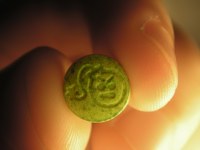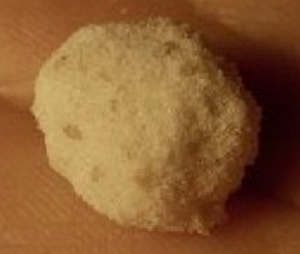The Truth About Ecstasy
Not since the 1960s has the world witnessed a drug phenomenon like the rapid and widespread emergence of Ecstasy and the growing group of drugs that are loosely and very unofficially classified as "club drugs". Apparently the term club drug refers to the fact that these are quite prevalent at large parties called "raves" or "trances". Included in this group of drugs are five that we are getting more and more questions about in classrooms and from teachers. This is the first in a series of articles that will discuss the main drugs in this group.
Ecstasy
Described by enthusiasts as a source of intense euphoria and by detractors as a cause of brain damage and even death,
Ecstasy has brought about unprecedented levels of interest -- and misinformation. While Ecstasy is found across America
in living rooms and dance clubs, reliable information about the drug is not.
Methylenedioxymethamphetamine, known as Ecstasy, or MDMA, is structurally similar to a combination of methamphetamine
(speed) and the hallucinogen mescaline.
MDMA is not a new drug, in fact it was patented in 1913 (patent #274.350) by the German chemical company
Merck supposedly to be sold as a diet pill (the patent does not mention any intended use). Merck decided against marketing the drug
and had nothing more to do with it. According to urban legend, the US army tested MDMA in 1953 as a possible truth serum,
but there is no known evidence supporting this.
In the seventies some doctors were researching the use of MDMA to facilitate counseling, but it was found to have too many
damaging side effects. The FDA banned MDMA in 1985 making it illegal for any use throughout the U.S. and placed it in the
same drug classification as LSD and heroin: a classification that includes the statements "no accepted medical use", "lack
of accepted safety for use" and "high potential for abuse". Then some fool named it "Ecstasy" and everybody had to have
some.
MDMA is taken orally, usually in the form of a tablet or capsule, the effects of which can last up to six hours. Users claim that
it gives a heightened sense of compassion, the desire to be close with others and the ability to dance for hours on end.
Because of the speed effect, MDMA can suppress the urge to eat, drink or sleep, enabling users to endure two to three day
marathon parties. Consequently, MDMA use sometimes results in severe dehydration or exhaustion. Physical signs include
dilated pupils, increased blood pressure and heart rate. MDMA use has also resulted in deaths from hyperthermia (a soaring
fever), liver and kidney damage.


Images. 1) Ecstacy tablets. 2) Green Bomb Ecstacy.
MDMA can cause long-term damage, even if that damage isn't immediately visible. In monkeys, exposure to MDMA for only
four days caused brain damage that was still evident six to seven years later. The same study provides further evidence that
people who take MDMA may be risking permanent brain damage.
Your brain cells, in fact all the cells in your whole nervous system, run on a system of electricity and chemicals. Drugs affect
the body by manipulation of these; forcing the release of some chemical or other, inhibiting the transfer of messages along the
nerve channels or fooling the whole operation by imitating a nervous chemical.
Communication of information between nerve
cells is accomplished by movement of chemicals across the small gap between them called the synapse. These chemicals
are known as neurotransmitters, and there are about 60 of them, each apparently with its own specific message. One neurotransmitter
might communicate the message to eat; another sends a signal of fatigue or of fear.
Serotonin, the nervous chemical most affected by MDMA, has a lot to do with mood, feelings of pleasure and the ability to
think and remember. MDMA forces unnaturally large amounts of serotonin to be released into the brain, causing the user to
experience artificial feelings of empathy or well being. But there isn't an unlimited supply of serotonin in the nervous system
and it cannot be replenish as rapidly as it is used under the influence of MDMA, resulting in depression, often severe.

MDMA Rock
MDMA is also related in structure and effects to methamphetamine, which has been shown to cause degeneration of nerve
cells containing another neurotransmitter, dopamine. Damage to these nerve cells is the underlying cause of the motor disturbances
seen in Parkinson's disease. Symptoms of this disease begin with lack of coordination and tremors, and can eventually result in a
form of paralysis. In our detox rehab centers, the effects and damages of this drug are obvious.
MDMA is a money maker. Those who are manufacturing the drug are making a killing. (Pun intended.) The cost of MDMA
pills on the street ranges from $15 to $45 each. Meanwhile, it costs as low as 2 cents to 25 cents per dose to manufacture
them. This high profit margin is one of the factors encouraging MDMA importation to the U.S.
Do not think for an instant that somebody making that kind of money is not going to promote what they sell. MDMA is
advertised. The fact that it's illegal just changes the marketing strategy a bit. The name, "Ecstasy" alone is worth millions
in sales. Every time it is used it calls up pictures of delight and pleasure. This name did not come about by accident, it was
a marketing coup.
So what can be done? Declare war against MDMA? We can ill afford another war against drugs that accomplishes nothing.
Our job is to make people, especially young people aware of the truth -- that they are being told lies about MDMA and that
it is a dangerous drug that can result in permanent disabilities or even death.